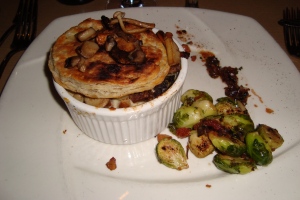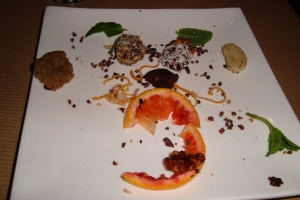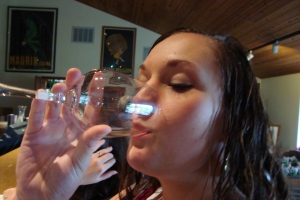I apologize for my hiatus (I’m not sure who I’m apologizing to, as far as I know no one reads this…maybe to myself?) As a follow up to my post about High Fructose Corn Syrup, I have discovered why the Corn Refiner’s Association may have started that ad campaign. Check it.
Just published online in the journal, Environmental Health (http://www.ehjournal.net/
home/), is a science commentary reporting that mercury was found in 9 of 20 samples of commercial
high fructose corn syrup (HFCS), a common sweetener of foods and beverages. The HFCS came
from three different manufacturers.
Mercury is a potent brain toxin that we know accumulates in fish and seafood, although diet is not
the only route by which we are exposed. When babies are exposed to elevated mercury in the womb,
their brains may develop abnormally, impairing learning abilities and reducing IQ. For these youngest
children, the science increasingly suggests there may be no “safe” level of exposure to mercury.
The people behind the report discovered that even manufacturers often don’t know that mercury is in HFCS, even though the information is available to them. They decided to take matters into their own hands, and look into it.
When we learned of this gap in information, we set out to do the FDA’s work for it. We went to supermarkets and identified brand-name products—mainly soft drinks, snack foods and other items mostly marketed to children—where HFCS was the first or second ingredient on the label.
We sent several dozen products to a commercial laboratory, using the latest in mercury detection technology. And guess what? We found mercury.
In fact, we detected mercury in nearly one in three of the 55 HFCS-containing food products we tested. They include some of the most recognizable brands on supermarket shelves: Quaker, Hunt’s, Manwich, Hershey’s, Smucker’s, Kraft, Nutri-Grain and Yoplait.
I found this to be disturbing because these name brands are the ones with the most marketing, and are the most readily accessible to the public. Not everyone can afford to eat organic.
It pisses me off that the government can decree that there is a “safe amount” of poison that can be in the food the people of our nation consume. I hope that the FDA does do a full scale investigation of this issue – this study absolutely shows that it is necessary.
Not So Sweet: Missing Mercury and High Fructose Corn Syrup
By David Wallinga, M.D., Janelle Sorensen, Pooja Mottl, Brian Yablon, M.D.
Institute for Agriculture and Trade Policy
January, 2009
Full Report













You must be logged in to post a comment.